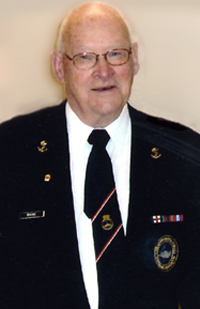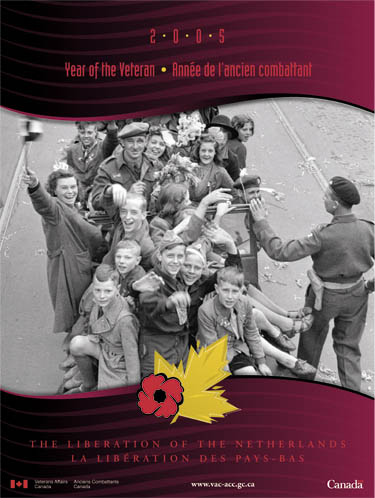Page Content

Ron Rhine
Ron Rhine served as executive secretary of the Alberta Retired Teachers’ Association from 1993–96. During the Second World War, Rhine was a member of Canada’s motor torpedo boat flotilla. May 8, 2005, marks the 60th anniversary of the end of the Second World War and the liberation of the Netherlands. Rhine will attend major celebrations in Apeldoorn, the Netherlands, May 3–8.
If you look on a map, you will see that Apeldoorn is in the interior of Holland, close to Ardennes and other places where heavy fighting occurred during the Second World War. The Canadian government, through the Department of Veterans Affairs, is sending an official delegation and inviting other veterans of the fighting in the Netherlands to attend celebrations in Apeldoorn.
It is easy to understand why army veterans would be asked to attend such celebrations, but for many, it may not be clear why sailors or airmen would attend. As an ex-navy type, I would like to take this opportunity to explain.
In order for any invasion of another country to take place, a massive amount of supplies, equipment and personnel must be gathered. For the invasion of Normandy and Western Europe, supplies and men came from Africa, Australia, Canada, India, New Zealand, the United States and elsewhere. The Merchant Navy personnel moved men and supplies with the assistance of convoy escorts, of which the Canadian navy played a significant part. Ships and men were lost, but the majority of the needed materials got through.
Once men and materials were sufficient to launch an invasion, sailors manned the landing craft, troopships, minesweepers, tugs and other ships, and the invasion was on. Frogmen removed explosives and underwater hazards so that landings could take place. Many of those men did not survive, but the job was largely successful. A large naval force guarded the invasion fleet from penetration by German navy forces and provided artillery for the invading army forces. Big ships like cruisers and battleships, and lesser ships like destroyers shelled gun emplacements and nests of machine guns and trenches. Smaller ships and boats (destroyers, corvettes, frigates, minesweepers, torpedo boats and motor gunboats) attacked the German naval units that were trying to wreck the invasion fleet.
Canada had two motor torpedo boat flotillas: the 29th, a group of eight motor torpedo boats, and the 65th, eight boats that were motor torpedo boats and motor gun boats combined. During the invasion on June 6, 1944, the 29th guarded the east flank of the invasion fleets, and the 65th helped to protect the west flank. Two motor torpedo boats, some corvettes and other Canadian ships were lost and men killed or severely wounded. Ships of other nationalities were also lost.
After the beachhead was firmly established and the invasion under way, the Canadian navy still had a critical part to play deploying commandos, damaging ports and installations, placing agents ashore or retrieving them, assisting resistance workers, rescuing men escaping capture by the Germans, plotting targets such as gun placements, and resisting German attempts to sink ships or lay mines in harbour entrances or shipping lanes.
This is not a complete explanation of why sailors are attending ceremonies in the Netherlands. Those of us who are attending are honoured to have been selected and, once again, we will try to do Canada proud. The occasion of this anniversary is an appropriate time to remind people that not only were the Netherlands and other countries in Europe liberated, but our freedoms in Canada were protected.
To those who were killed and to those who still suffer from the fighting, we owe a tremendous debt of gratitude.

Courtesy of Veteran Affairs Canada
This poster is the first in a series to be unveiled during the Year of the Veteran. The photograph featured on this poster was taken May 7, 1945. It captures the enthusiasm of Dutch citizens celebrating the liberation of Utrecht by units of the 1st Canadian Corps. More than 7,600 Canadians died during the campaign to liberate the Netherlands (1944-1945). This shared tragedy, as well as the grit and determination embodied by Canadian soldiers and Dutch people alike, is the foundation of the powerful bond of friendship that remains between the two countries. The poster’s release in 2005 pays tribute to the 60th anniversary of the liberation of the Netherlands.
